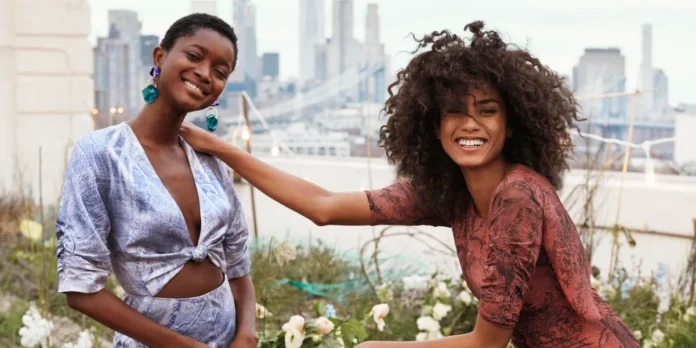Throughout history, dress codes have played a significant role in shaping societal norms and expectations. From ancient civilizations to modern times, clothing has been used for identification, differentiation, and social order. Dress codes have been influenced by cultural, religious, and economic factors, evolving to reflect changing values and beliefs. Visit FashionLifeSlyleNews.com now to learn how societal dress norms impact today’s democracies.
Role of Dress Codes in Establishing Social Norms
Dress codes serve as a mechanism for establishing and reinforcing social norms within a community or institution. They provide guidelines that define appropriate attire for specific occasions or settings. By adhering to dress codes, individuals contribute to maintaining social order and demonstrate their conformity to societal expectations. Explore womenblog.us to learn more about the influence of dress rules in democratic nations and learn how to unlock the secrets that lie behind them.
Individual Expression and Identity
While dress codes often emphasize uniformity, they can also allow for individual expression and the assertion of personal identity. Fashion choices enable individuals to communicate their beliefs, interests, and cultural affiliations. Dress codes that balance uniformity and individuality can foster inclusivity and self-expression.
Dress Codes in Educational Institutions
Arguments in Favor of Dress Codes
Supporters of dress codes in educational institutions argue that they promote discipline, reduce distractions, and create a level playing field among students. Dress codes can minimize socioeconomic differences, prevent clothing-related conflicts, and instill a sense of pride and belonging within the school community.
Arguments Against Dress Codes
Opponents of dress codes argue that they infringe upon individual freedoms, stifle creativity, and reinforce gender stereotypes. Dress codes may disproportionately affect marginalized groups, limit self-expression, and hinder students’ ability to explore their identities. Critics also argue that dress codes place undue focus on external appearances rather than academic achievements.
Balancing Individuality and Uniformity
Striking a balance between individuality and uniformity is crucial when implementing dress codes in educational institutions. Schools can consider flexible dress codes that allow self-expression while maintaining appropriate standards. Inclusive policies, student involvement in decision-making processes, and sensitivity to cultural and religious diversity can contribute to a more balanced approach.
Dress Codes in the Workplace
Professionalism and Dress Codes
Dress codes in the workplace aim to project professionalism, create a cohesive work environment, and convey a certain image to clients and customers. Appropriate attire is often seen as a reflection of an individual’s competence, credibility, and commitment to the organization. Dress codes vary across industries, with some sectors adopting formal attire while others embrace more casual styles. To find out more about the impact that formal dress codes have on modern democracies, check out stylemulberrysale.com today.
Impact of Dress Codes on Employee Morale
Implementing dress codes can have positive and negative effects on employee morale. While some employees appreciate clear guidelines that eliminate ambiguity and promote unity, others may feel restricted and constrained by dress codes. Maintaining a positive work culture is essential to balance professionalism and employee comfort.
Addressing Discrimination in Dress Codes
Dress codes must be carefully designed to avoid discriminatory practices. Policies that disproportionately impact certain groups based on gender, race, religion, or cultural practices can perpetuate inequality and hinder diversity and inclusion efforts. Organizations should regularly review and update their dress code policies to ensure fairness and equal opportunities for all employees.
Dress Codes in Public Spaces and Events
Cultural Sensitivity and Appropriateness
Dress codes in public spaces and events often aim to maintain cultural sensitivity, ensure appropriateness, and promote public decency. Cultural attire may be required or encouraged to respect the customs and traditions of specific communities or events. Dress codes can help create a respectful and inclusive atmosphere for all participants.
Maintaining Security and Safety
Certain dress codes may be implemented in public spaces and events to maintain security and safety. For example, restrictions on face coverings or prohibiting certain accessories or clothing items can help identify individuals and prevent potential threats. Balancing security concerns with individual rights is crucial in these cases.
Challenging Traditional Dress Codes
In recent years, there has been a growing movement to challenge traditional dress codes seen as oppressive, discriminatory, or outdated. Activists and individuals advocate for more inclusive, body-positive, and gender-neutral dress codes that celebrate diversity and accommodate a broader range of identities and expressions.
Role of Modern Democracy in Shaping Dress Codes
Influence of Public Opinion and Legislation
In modern democratic society, dress codes can be influenced by public opinion and legislative actions. As societal attitudes change, there is a greater emphasis on individual rights, diversity, and inclusivity. Public debates, social movements, and legal reforms significantly shape dress codes to align with evolving societal values.
Balancing Individual Rights and Social Cohesion
Modern democracies strive to balance individual rights and freedoms with the need for social cohesion and harmony. Dress codes should be designed to respect and protect individual expression and identity while considering the community’s or institution’s broader interests. This delicate balance ensures that dress codes uphold democratic principles.
Role of Media and Fashion Industry
The media and fashion industry substantially influence dress codes and societal perceptions of fashion. Trends, celebrity culture, and media representation shape public attitudes and expectations regarding clothing choices. The fashion industry is pivotal in challenging traditional norms, introducing new styles, and promoting diversity and inclusivity in dress codes.
Conclusion
The relationship between modern democracy and dress codes is complex and multifaceted. Dress codes serve various purposes in different settings, from establishing social norms and fostering professionalism to maintaining security and cultural sensitivity.
However, balancing uniformity and individuality, inclusivity, and social cohesion remains challenging. In a modern democratic society, dress codes should evolve to reflect changing societal values, protect individual rights, and embrace diversity and inclusivity.









